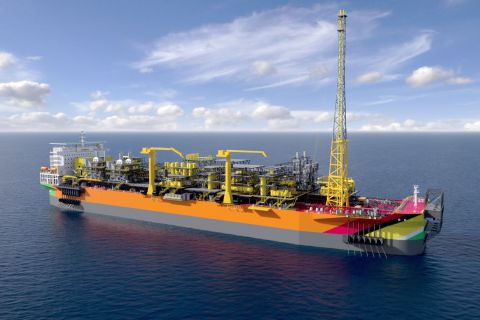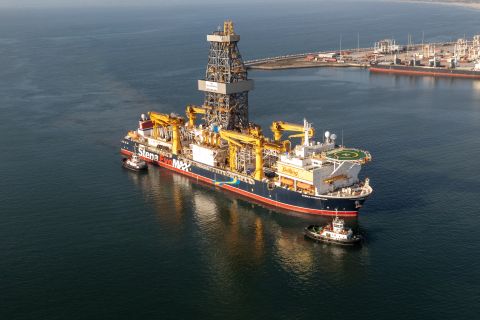
Despite tremendous strides in technological advances, the oil and gas industry is never without its challenges. E&P polled several technology gurus at oil and service companies to get the conversation rolling.
Ahmed Hashmi, head of upstream technology, BP
The two most pressing upstream technology challenges facing the energy industry today are both related to economics. The first technology challenge is safely reducing the cost of resource recovery. This is always important but never more so than in today’s environment of low oil prices. The question is how do we get the maximum performance from today’s technology, and the answer is that it can be done in different ways.
One way to reduce spending by way of technology is through digitalization. This emerging field can be a significant factor in improving efficiency and safety and ultimately lowering costs. As an industry, we should look beyond the oil and gas business to learn and put in place systems that can tell us what is really going on in the wellbore, near the wellbore and in the reservoir. The BP Well Advisor program is an excellent example of this in action.
Digital technologies have always collected data points relating to pressures, depths, direction and other variables. But until recently there was no technology that could turn that raw data into information for use in real time. BP Well Advisor technology enables operators to integrate those real-time data with predictive tools that are converted into easily understood graphics and displayed on computer consoles.
Another challenge for the future is to become more efficient and effective through the use of technology enhancements such as drilling automation, low-cost artificial lift, and water treatment and reuse. Effectiveness means getting more production per well by safely targeting reservoir segments of good deliverability and designing highly productive completions. This requires integration of multiple sciences such as geology, geophysics, geomechanics, petrophysics and chemistry.
Doug Valleau, chief geologist, Hess Corp.
It’s become a common refrain for companies with unconventional E&P operations to say they need to find ways to work cheaper, smarter, safer and more efficiently to be competitive, especially during the current low-price environment. This is part of the DNA at Hess, where the culture is driven by principles of lean manufacturing. This is key to our expertise in unconventionals and long history in EOR. A primary goal is to increase efficiency and eliminate waste. Technology is an effective way to achieve that. One of the biggest challenges Hess faces, particularly during times of low crude prices, is to remember the importance of technology and innovation when we are exploring ways to become more efficient. By driving value with an emphasis on technological solutions, Hess has been able to make several decisions that have increased efficiency. In turn, we can do more with less. For example, Hess recently partnered with GTUIT and is operating 15 wellsite gas capture and NGL extraction units in the Bakken. With a small investment, Hess has been able to process an additional 8,014 cu. m/d (283,000 cf/d) of associated gas while reducing flaring.
While Hess has some of the best acreage in the core of the Bakken, the company is always looking for ways to squeeze more oil out of the rock. Looking forward, precisely what technology will be needed to coax more oil is still unclear. So Hess has invested $25 million in the Hess Digital Rock Physics Laboratory at the University of Wyoming. The facility is the only laboratory in the world that can study three-phase fluid flow through ultratight rock at the macro, micro and nano scale at full reservoir temperature, pressure and stress conditions.
Hess can recreate underground flow at temperature and pressure conditions, real things that are encountered underground in real reservoirs. For example, Hess is conducting reservoir condition three-phase micro corefloods in liquid-rich ultratight rock to directly observe the impact of custom surfactants on recovery efficiency. The bottom line is that through the appropriate application of advanced technology using lean processes, Hess is increasing recoverable reserves, becoming more capital efficient and doing so in a way that fosters environmental stewardship.
Chris Rittler, CEO, ABB Wireless
The most pressing technology issue is the overall lack of modern network connectivity in the field, which includes both devices and personnel. Modern networks include broadband and narrowband wireless technologies as part of a complete managed industrial wireless solution. If oil and gas executives want their operations teams to increase efficiency by implementing digital oil fields, the fabric that ties the digital oil field together—the network—cannot be overlooked.
Leading oil and gas players have begun to treat drilling and production data as company assets. If companies are truly planning to do more with less by using timely data to operate by exception and reduce downtime, the infrastructure that delivers access to that data becomes more valuable to the business.
From intelligent wellhead monitoring and control to asset tracking, mobile access and video surveillance, comprehensive wireless networking solutions that address every aspect from the operations center out to the sensor are critical to achieving higher operational efficiency.
Modern wireless systems support multiple oilfield applications by using an optimized mix of network technologies to create a flexible, scalable architecture. When used in combination, point-to-point and point-to-multipoint (PTP/PTMP) systems and broadband wireless mesh provide very high levels of performance and reliability. PTP/PTMP systems provide the high-speed backbone, and broadband mesh can distribute that capacity to the edge with the ability to route around points of failure. This translates to much higher levels of network availability, proven to be 99.99% in some fields. Narrowband PTP/PTMP systems have a critical role to play in challenging terrain, connecting remote endpoints and creating local site networks where wireless input/output is gaining traction over traditional cabled infrastructure.
With a strong communications foundation, the digital oil field enables real-time production data, secure mobile access and cost-saving collaboration across departments—all things critical for leaner, meaner upstream operations.
Richard Alabaster, vice president of surface technologies, FMC Technologies
The first issue is the need to substantially reduce the costs of the entire value chain from drilling through completion to producing the hydrocarbons. Great progress has been made over the past years, and this has accelerated in 2015, but more remains to be done to bring operators’ returns to an acceptable level in the new commodity price environment and to make these gains sustainable.
The second issue is optimizing hydrocarbon recovery from both new and “browning” developments. The ability to reduce the time to first sale, to understand in real time the flow composition and dynamics and to be able to take better actions more rapidly and cost-effectively will be key to this.
There are now technology solutions that reduce cost by reducing equipment size, footprint and complexity in addition to increasing operational flexibility; reducing installation and operation time; reducing the number of people needed onsite; and reducing the rate of equipment “consumption” (wear and tear). For example, FMC’s InLine DeSander significantly reduces erosion of flowback and production equipment; new designs substantially reduce rig and manpower time to install wellhead systems or increase the fatigue life and durability of frack pumps; and advanced separation technologies greatly reduce the size of production processing equipment, improve output quality and thereby reduce downstream costs.
Regarding hydrocarbon recovery, advanced flow treatment technologies can be applied in completion operations to rapidly and cost-effectively bring early production to sale while still cleaning up the wells. Second, we can more quickly release completion and early-production equipment by deploying high-performance permanent facilities earlier. Here again, advanced compact inline flow processing technologies enable these facilities to be pre-engineered for optimal footprint, cost and overall field performance and to be standardized and prefabricated for rapid installation. In addition, such permanent facilities provide high operational flexibility (turn-down ratio) to handle substantial changes in flow characteristics. They also produce cleaner water output that can be reinjected for better reservoir recovery and lower remedial intervention or disposed of at significantly lower costs. Third, optimal operation of both of the above is facilitated by the judicious use of sensors and automated real-time analysis and interpretation of the data they provide. Finally, these same technologies can be used to retrofit older developments to enhance recovery with minimal footprint and cost impact.
Dr. Chris Freeman, director of field development, io Oil & Gas Consulting
The overarching challenge in the offshore industry is making projects viable in the low oil price environment. The industry knows that advancing technology will be the key to enhancing recovery of remaining reserves in this environment, but producing new tools, technologies and equipment and changing the industry’s way of doing things can prove challenging.
The biggest technical challenge of the industry is to reduce the costs of its E&P and development activities. This includes better and cheaper seismic techniques, faster automated drilling through more compact and lighter equipment with reduced maintenance and new equipment for deep water and other challenging field development conditions such as HP/HT reservoirs. As exploration goes
further afield, equipment will need to be robust enough to stand up to new environments, especially deeper water and Arctic conditions.
The second main challenge is using data to its full advantage. Big Data is being touted as one of the secrets to the future of oil and gas as it allows the uncovering of invisible patterns and connections by linking disparate datasets. As such, there is the potential for operators to find many efficiencies and maximize the performance of components throughout their operations. However, there are significant challenges that must be overcome before the future promised by Big Data is realized.
Today many companies have vastly improved their capability to capture data. However, for most their ability to effectively process and implement learnings from these data are less advanced. This is a problem that can only be solved with investment, talent and expertise, and companies must build teams who have the necessary technical and analytical specialties to develop systems to properly interrogate data.
When looking to access and explore new reserves, there are a number of technological advances that can assist operators, some of which are being trialed or currently used in offshore projects.
Remote technology is useful once a platform has been erected, as wearable technology such as Google Glass allows crew members to receive guidance from onshore support centers without transporting them to the platform.
Unmanned vehicles have been used on the seabed for remote operations for years, but now the industry also is using drones or unmanned aerial vehicles to examine remote locations before sending crews there. This unmanned technology allows for quick access to new sites without the cost of sending a live crew.
The automation of drilling also offers significant improvements, from consistent quality and improved performance to dramatically improved safety. Automated drilling also removes the potential for human error, as machines are able to complete repetitive and arduous work without suffering a decline in output.
New technologies such as subsea separation and subsea compression also will make a big difference to reduce the requirement for large platforms and/or floating processing vessels. These subsea systems also require minimal maintenance, thus reducing future operating costs.
To realize some of the potential offered by improved technology and Big Data, the industry is embracing the concept of the Industrial Internet, combining machines and intelligent data to provide analysis and predictive data that enable preventative maintenance. Simply put, a pipeline will be able to report on when it would have the potential to rupture months before an incident would take place, and equipment will schedule its own maintenance when it is needed.
Big Data also can be used for sophisticated reservoir monitoring, allowing companies to optimize field depletion planning and maximize return on investment. As more cloud-based systems come online, management tools and remote working practices will become more commonplace, leading to safety improvements and cost reductions.
Mark Linton, technology and innovation director, Wood Group Kenny
Today’s challenges include subsea system design and operability in remote areas with increasing field and reservoir complexity. Accessibility to existing offshore infrastructure may not be economically or technologically feasible, so the industry is challenged to further develop subsea production solutions. Equipment reliability is a concern due to limited accessibility once installed subsea, and further equipment design and rigorous qualification processes are still being implemented to meet future demands.
Subsea production systems comprise myriad elements designed, manufactured, tested and installed by independent vendors and suppliers. Gathering and analyzing data such that the owner is able to operate and maintain the subsea production system as a holistic model is a complex requirement. In recent years the amount of data has increased exponentially, and companies must further develop systems to provide robust analytic tools to make appropriate decisions.
Data analytics continues to be an important challenge for all operators. Most collect vast quantities of data over the life of an asset’s operation; however, very few successfully mine that data for trends, risks and knowledge to improve the next generation of asset design and operation. Simplification and standardization can really only be achieved if a full understanding of the optimal operating and design regimes is analyzed and reviewed.
Having a valid integrity management system ensures the above can be achieved. Standardization should not be a cyclic initiative; it should be a process embedded within global business models and organizational structures on a long-term basis. Also, it is essential to achieve alignment to company and industry standards as well as suppliers’ standards based on functional requirements. Simplification of the requirements will need assessment of the risks and value accordingly to understand and mitigate any areas of concern. There is substantial work going on to advance this, especially through joint-industry projects.
Recommended Reading
Chevron Hunts Upside for Oil Recovery, D&C Savings with Permian Pilots
2024-02-06 - New techniques and technologies being piloted by Chevron in the Permian Basin are improving drilling and completed cycle times. Executives at the California-based major hope to eventually improve overall resource recovery from its shale portfolio.
Pitts: Heavyweight Battle Brewing Between US Supermajors in South America
2024-04-09 - Exxon Mobil took the first swing in defense of its right of first refusal for Hess' interest in Guyana's Stabroek Block, but Chevron isn't backing down.
Exxon Versus Chevron: The Fight for Hess’ 30% Guyana Interest
2024-03-04 - Chevron's plan to buy Hess Corp. and assume a 30% foothold in Guyana has been complicated by Exxon Mobil and CNOOC's claims that they have the right of first refusal for the interest.
Exxon Ups Mammoth Offshore Guyana Production by Another 100,000 bbl/d
2024-04-15 - Exxon Mobil, which took a final investment decision on its Whiptail development on April 12, now estimates its six offshore Guyana projects will average gross production of 1.3 MMbbl/d by 2027.
Stena Evolution Upgrade Planned for Sparta Ops
2024-03-27 - The seventh-gen drillship will be upgraded with a 20,000-psi equipment package starting in 2026.





